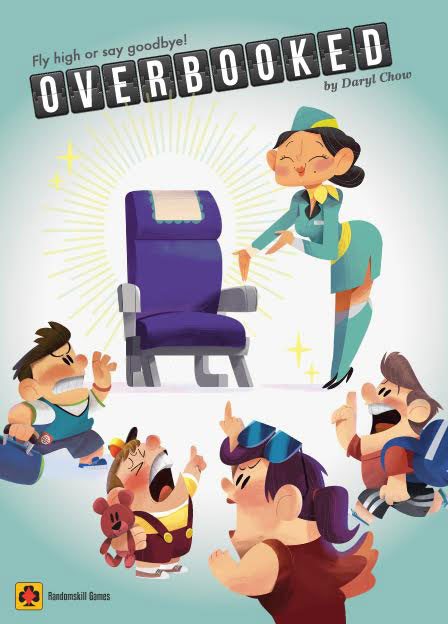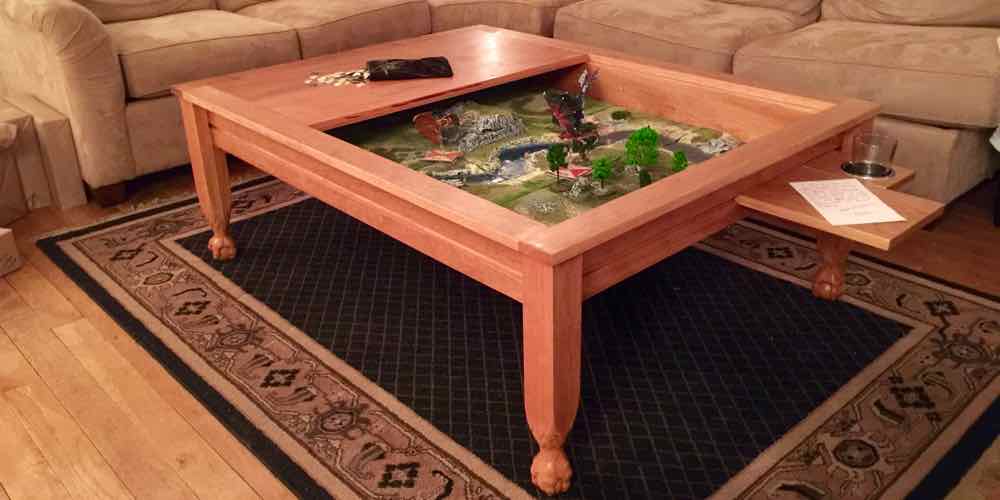Pack those passengers into your available seats—but pay attention to their seating requests! Friends want to sit in big groups, kids need adults to keep an eye on them, and some people are picky about window seats or aisles. Fill your flight if you can, but be careful not to sell too many seats, or you’ll find yourself Overbooked.
What Is Overbooked?
Overbooked is a game about seating travelers in a plane for 1 to 4 people, ages 8 and up, and takes 15–25 minutes to play. It’s currently seeking funding on Kickstarter, with a pledge level of Singapore $35 (about $26 USD) for a copy of the game. The rules are fairly easy to pick up, and the theme is fine for kids, too, but gameplay is tricky enough to provide a challenge for adults.
New to Kickstarter? Check out our crowdfunding primer, and visit our Kickstarter curated page for more projects we love.

Overbooked Components
Note: my review is based on a prototype, so final components may change. My prototype did not include a scoreboard, but it also had a plastic plane that I used as a first player marker.
- Scoreboard
- 4 Player boards (double-sided)
- 150 Passenger discs (30 each in 5 colors)
- 72 Passenger cards
- 24 Voucher cubes

The game components are fairly simple: the cards are square and show different configurations of colored circles, representing passengers and where they need to sit. The player boards show a section of an airplane and its available seats. They’re double sided—one side for 1–3 players and the other for 4 players.

The graphic design is fairly simple and clean, though I do think it may not be great for color-blind players, since the discs and the circles on the cards are only distinguished by color. It may be better (but more costly) to use different shapes as well as different colors, or else switch to other colors that are less likely to be indistinguishable for color-blind players.
The discs are fairly tiny, and the one problem I ran into sometimes is that if I needed to pick up a disc that was surrounded by other discs already, it was hard to get to it without bumping a lot of things around.
How to Play Overbooked
The Goal
The goal of the game is to score the most points by seating passengers optimally in your plane and avoiding overbooked passengers.

Setup
Give each player a player board, turned to the correct side, and 6 voucher cubes (placed in the voucher area on the board). Choose a starting player.
Shuffle the passenger cards, and lay out 4 cards face-up next to the deck. Put the passenger discs in a supply area. For a 2-player game, remove 10 of each color passenger.
Gameplay
On your turn, you pick a card, and then place passengers.
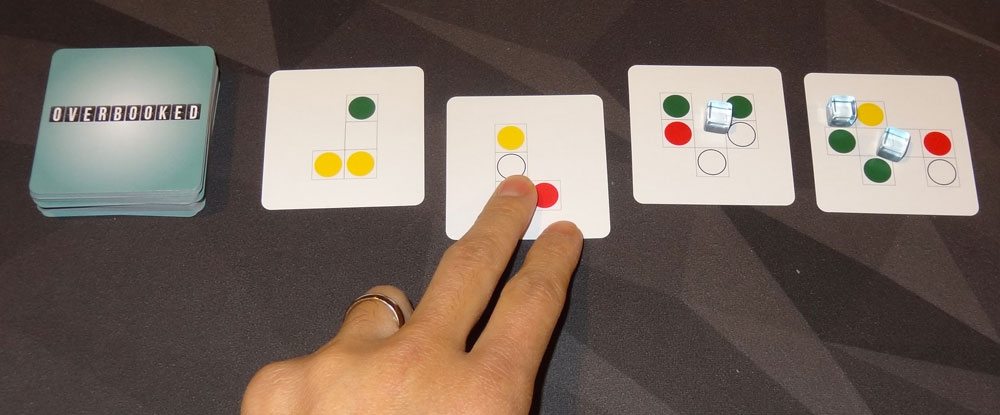
You may pick any of the four cards available, but they may cost you vouchers. The card furthest from the deck is free; if you want to skip over any cards, you must place voucher cubes on the cards that you skip. If you take a card that has vouchers on it, you claim those vouchers.
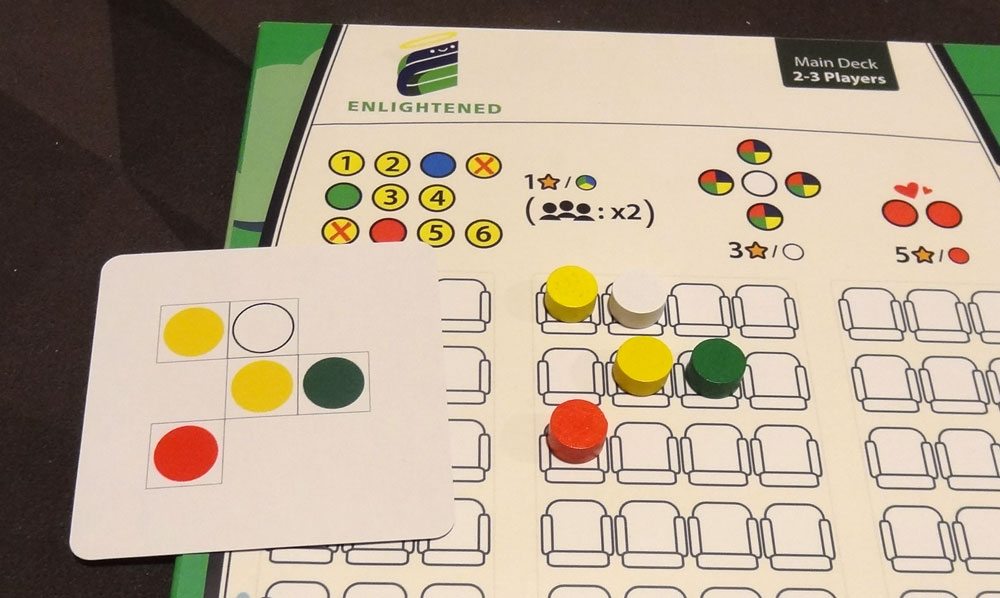
Take the passengers shown on the card from the supply, and place them into your plane. The passengers must be placed in the configuration shown on the card, which can be rotated in any direction, and the passengers must fit into one section of the plane (not crossing aisles). Some passenger cards have two passengers, specifying each one’s preference for window, middle, or aisle seat—in those cases, the two passengers do not need to be in the same section of the plane. If there is already a passenger in a seat when you place a new passenger, you bump the old passenger from the plane and put them into the “overbooked” section of your board.

Then, refill the cards by sliding the cards away from the deck and placing a new card next to the deck.
Game End
The game ending is triggered when any of the passenger colors runs out. Play until everyone has had the same number of turns. If you take a card and there aren’t enough passengers of that color to place, just place as many as you are able.
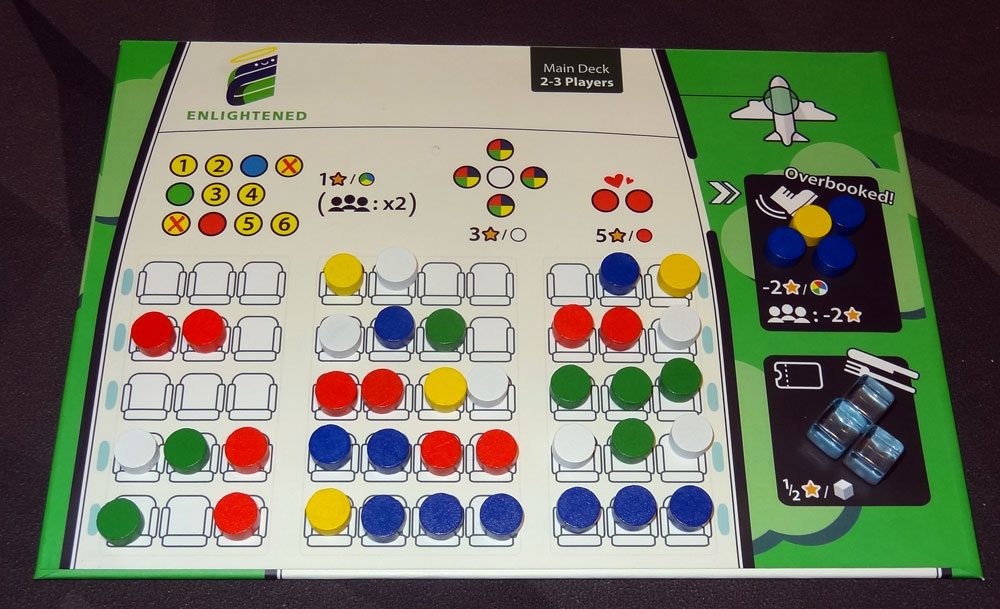
Scoring
- You score 1 point per passenger seated in your plane.
- You score for friend groups (green, blue, yellow): 1 point per passenger in the largest contiguous group of each color. (Adjacency does not cross aisles, and counts orthogonal only, not diagonal). If your group is larger than everyone else’s, you get 2 points per passenger instead.
- You score 5 points for each couple—a pair of red discs adjacent to each other but not adjacent to any other red discs.
- You score 3 points for each child (white) that has no empty seats or other children adjacent to it. You can score for a child that is against an aisle or edge of the board if the spaces next to it are filled with non-child passengers.
- You score .5 points for each voucher (rounded up to the nearest whole number).
- For each completely filled section of your plane, you score 8 points.
- You lose 2 points for each overbooked passenger. If you have the most overbooked passengers, you lose an additional 2 points.
The player with the highest score wins.
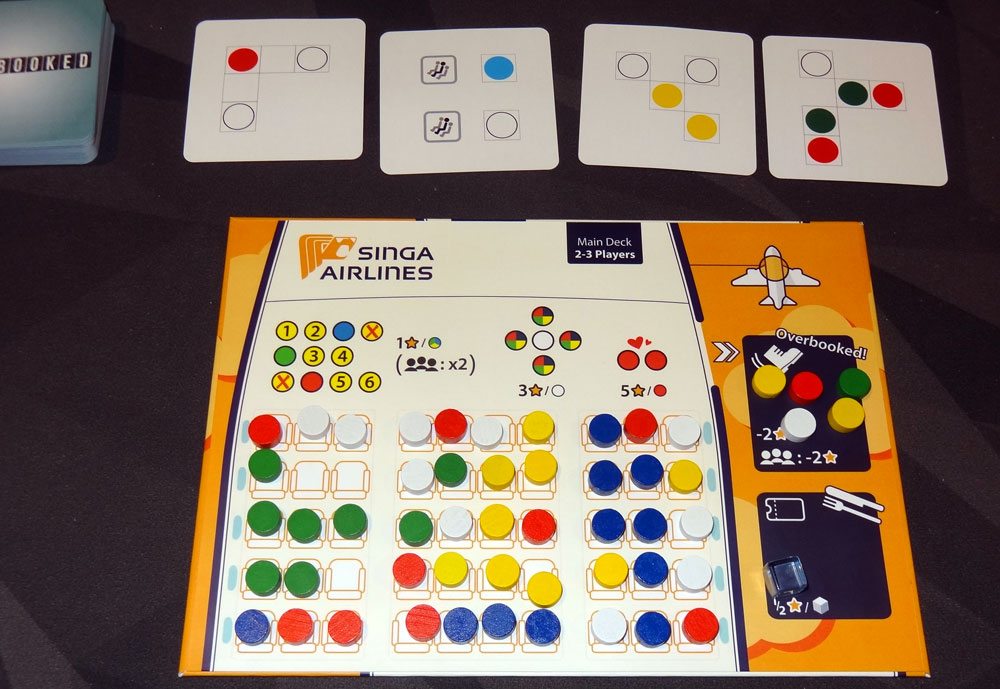
Solo Variant
For the solo game, you set up like a 2-player game, but with only one board. Instead of going for a particular score, you are trying to accomplish a particular goal before you run out of vouchers. You start with 6 vouchers for easy, 4 vouchers for medium, or 2 vouchers for hard.
You don’t have to use vouchers to skip cards—you may take any of the four available—but you do spend vouchers to remove a card from the game. Each time you overbook a passenger, you lose a voucher. Each time you fill a section of your plane you gain 2 vouchers.
There are three scenarios:
- Best Friends Forever: Have groups of size 6 or more for each friend color, and either at least 3 couples or 3 surrounded children
- Couples Retreat: Have at least 5 couples, and either 3 surrounded children or a group of at least 5 friends
- School’s Out: Have at least 8 surrounded children, and either 3 couples or a group of at least 5 friends

Why You Should Play Overbooked
Overbooked is a packing game, like Sagrada or, say, Tetris. You’re looking for the best way to pack as many people into your plane as possible without overbooking them—but at the same time, you’re trying to fulfill particular patterns. Get friends in a big clump, surround those kids, put couples together but only in pairs. And, of course, fill an entire section if possible (though you’re almost guaranteed to overbook to accomplish that).
I happen to be really fond of packing games—I’ve always loved Tetris and I pride myself on my ability to figure out ideal configurations to make things fit. But in Overbooked, the cards are designed to make your job difficult. Why does this kid need to sit diagonally right there? What about this couple—why can’t they just be happy with their third wheel?
The gameplay is fairly simple and easy to pick up (though those icons on the player board may not be intuitive at first), but you get some great choices to make each turn. First, do you want to spend vouchers to skip over a difficult card? Eventually, it’s probably worth taking a card that has a bunch of vouchers on it—not so much because they’re worth points, but because they’ll let you skip over cards later.
Sometimes you have to decide between ideal placements: one position will increase a friend group, but place a kid next to another kid; the other placement will isolate the kid but break up a friend group. Which do you choose?
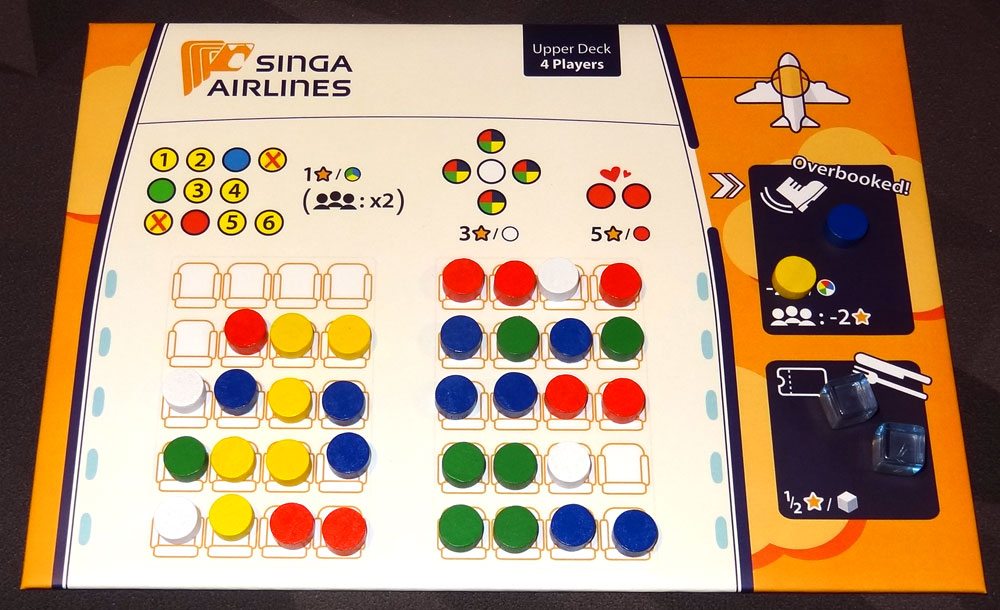
Thematically, the game can be a little funny—it makes sense that friends want to be seated in large groups, but my daughter pointed out that it’s funny that the red people just want to sit next to another red person—they don’t really care who it is, as long as it’s exactly one. And although kids get points for being surrounded, you’d think that the other people would lose points for sitting next to them.
But realistic accuracy aside, Overbooked is a lot of fun for puzzle lovers. For the most part, you’re focused on your own plane and optimizing your seating, but you do have to keep an eye on other players, too—you don’t want to be the person with the most overbooked passengers, and if you’re close to having the largest group of a type of friend, it may be worth focusing on that because it doubles your score for those friends.
For more information or to make a pledge, visit the Overbooked Kickstarter page!
Click here to see all our tabletop game reviews.
Disclosure: GeekDad received a prototype copy of this game for review purposes.

